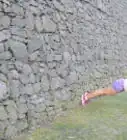This article was co-authored by Dean Theriot. Dean Theriot is a Personal Trainer and the Owner of Timberline Fitness in Houston, Texas. With over 25 years of experience in the fitness industry, Dean specializes in personal, group, and sport-specific training. Dean holds a BS in Exercise Physiology from LSU. Dean combines resistance and cardiovascular training with pilates exercises for comprehensive workouts for his clients. His sport-specific training includes football, basketball, and baseball.
There are 10 references cited in this article, which can be found at the bottom of the page.
This article has been viewed 14,042 times.
Handstands are a great form of exercise that test your strength, balance, and mobility. It can take months or years of practice and hard work just to get into a handstand, which is quite an accomplishment. Once you’ve mastered the mental courage and physical strength to get into a handstand, it can be difficult to find your balance and hold the position. Learning to use proper form and technique and strengthening stabilizing muscles will not only help you get into a handstand easier, but help you to balance and hold a handstand longer.
Steps
Working on Your Form and Technique
-
1Practice transitioning from a lunge into a one-legged pike. Start in a lunge position with one of your legs bent forward at a 45 to 90-degree angle. Transition from your lunge to a “T” position by lifting your arms straight above your shoulders and pushing off your back leg. As your leg moves up, lean your upper body forward. Engage your core so that your back leg, core, and upper body are in a straight line parallel to the ground. To move from a “T” position to a one-legged pike, lean your upper body forward until your hands touch the ground and your back leg is lifted slightly higher than a 90-degree angle from the ground.
- Practicing this transition will promote muscle memory. When your muscles are familiar with this motion, it will be easier for you to get into a handstand and you can focus on finding your balance.
- Before going to the next step, try switching legs to have the opposite leg forward in a lunge. Usually, people who are right-handed will feel more comfortable with their right leg forward in a lunge, but this is not always the case. It is important that you try both to see which leg you feel the most comfortable putting weight on.[1] Feeling more comfortable with this transition will help you confidently get up into your handstand and adjust as needed.
-
2Practice your kick up. From the one-legged pike position, begin to use a small amount of momentum and strength to practice your kick up. Use your strength to push away from the ground with your planted foot while using a bit of momentum to lift your back leg further up.
- Do this as many times as needed until you feel comfortable and able to kick up a bit higher.
- The kick up is how you get into the handstand position, so it is crucial that you practice to find the right amount of momentum to get into your handstand and give yourself time to find your balance so you can hold your handstand longer.
Advertisement -
3Use momentum and strength to kick up all the way. Using a bit more strength and momentum than you did during practice, kick all the way up into your handstand. This may present a mental challenge if you are afraid of flipping over. If you don’t use enough momentum though, you may only get up into your handstand for a few seconds.[2]
- For your first few tries, you might want to practice against a wall.[3] It takes some time to figure out the right amount of momentum to get you up into a handstand so that you have time to balance, but not so much that you flip over. To help assuage your fear of flipping over and decrease the risk of injury from doing so, practice by positioning yourself so that your hands land about 6 inches (15 cm) from the wall, putting your feet up against the wall.[4]
-
4Look down at the ground to help you concentrate and find your balance.[5] Once you have kicked up into your handstand, lift your head and look straight down at the ground.
- Holding a handstand longer is as much a mental exercise as it is physical. By looking straight down, you can avoid distractions and keep your mind clear and focused on the task at hand.[6]
-
5Make sure your hands are placed right under your shoulders. This is one of the most common mistakes people make when trying to hold a handstand longer. If your hands are too far apart, you may be able to get up into a handstand, but it is unlikely that you will be able to hold it for more than a few seconds.
- When done correctly, your hands should be directly under your shoulders. This helps distribute your weight down to the floor rather than in your upper back and shoulders. With your weight concentrated above your center of gravity, you can focus more on balancing and less on mustering the strength to hold yourself up.
-
6Avoid arching your back by engaging your core. To hold a handstand longer, your body needs to be tight and as still as possible. By consciously engaging your core, you will help ensure that your body is straight and your weight is balanced around your center of gravity.
Building up Your Stabilizing Muscles
-
1Practice pike rolls with a Swiss ball to help build core and shoulder strength. Grab a large Swiss ball (approximately 25 inches (64 cm) in diameter) and get into plank position with your shins centered on the top of the Swiss ball and your hands on the ground. Once you are in a stable plank position, begin to move into a pike position by slowly rolling forward so that your shins move off the Swiss ball and the tops of your feet roll on top of the center of the Swiss ball. As your legs roll forward, spike your hips up towards the ceiling. Hold this position for a few seconds, and then gently roll back into your original plank position. Practice this often and repeat this motion as many times as you can to build up these stabilizing muscles.
- This exercise will help you build the core and shoulder muscles needed to stabilize your body and hold a handstand longer.
- Pike rolls are also a great way to practice the correct shoulder positioning for handstands.[7]
-
2Build your arm strength using free weights for bicep curls and triceps extensions. Free weights provide the flexibility for you to choose your own resistance. You can increase your free weights as your strength improves over time.
- You can also try doing some intense dumbbell overhead presses.[8]
-
3Increase your upper body strength with push ups. Push ups are a great way to work your entire arm, including your triceps and biceps. Push ups will also work your back, chest, shoulders, and core, all of which will help you build the muscular strength needed to stabilize and hold a handstand longer.[9]
-
4Improve your core strength with plank pose. Holding plank pose strengthens all the core muscles that will help you hold your handstand longer, including your abdominals, glutes, and lower back.Begin on all fours, making sure that your hands are directly beneath your shoulders and your knees are directly beneath your hips. Flip your feet so that the balls of your feet are on the ground and your heels are lifted. Then, push your legs back until they are straight and lifted.
- When holding a plank pose, make sure that you do not arch your back up or down. Arching your back up puts more pressure on your arms and fails to fully engage your core. Similarly, arching your back down causes your hips to dip down, which can put unwanted pressure on your lower back and possibly cause a strain or other injury. Use a mirror to make sure that your body stays in a straight line.[10]
- If you are a beginner, hold a plank pose as long as you can while maintaining good form. As you get stronger, work your way up to 3 sets at 60 seconds each.[11]
Expert Q&A
-
QuestionHow do you stabilize a handstand?
 Tanya BerensonTanya Berenson is a Gymnastics Instructor and the General Manager of the Los Angeles School of Gymnastics. With over 25 years of professional gymnastics experience, Tanya has also served as a consultant to USA Gymnastics, has served as the USA World Maccabi Games Head Coach, USA Gymnastics Meet Director, and RAS counselor. She holds a B.Ed. in Early Childhood Development from the University of California, Los Angeles.
Tanya BerensonTanya Berenson is a Gymnastics Instructor and the General Manager of the Los Angeles School of Gymnastics. With over 25 years of professional gymnastics experience, Tanya has also served as a consultant to USA Gymnastics, has served as the USA World Maccabi Games Head Coach, USA Gymnastics Meet Director, and RAS counselor. She holds a B.Ed. in Early Childhood Development from the University of California, Los Angeles.
Gymnastics Instructor Try to strengthen your triceps and biceps. By focusing on both your triceps and your biceps, you will build the strength needed to distribute your weight and stabilize your body if you begin tipping forwards or backwards in your handstand.
Try to strengthen your triceps and biceps. By focusing on both your triceps and your biceps, you will build the strength needed to distribute your weight and stabilize your body if you begin tipping forwards or backwards in your handstand. -
QuestionWhy can't I hold a handstand?
 Tanya BerensonTanya Berenson is a Gymnastics Instructor and the General Manager of the Los Angeles School of Gymnastics. With over 25 years of professional gymnastics experience, Tanya has also served as a consultant to USA Gymnastics, has served as the USA World Maccabi Games Head Coach, USA Gymnastics Meet Director, and RAS counselor. She holds a B.Ed. in Early Childhood Development from the University of California, Los Angeles.
Tanya BerensonTanya Berenson is a Gymnastics Instructor and the General Manager of the Los Angeles School of Gymnastics. With over 25 years of professional gymnastics experience, Tanya has also served as a consultant to USA Gymnastics, has served as the USA World Maccabi Games Head Coach, USA Gymnastics Meet Director, and RAS counselor. She holds a B.Ed. in Early Childhood Development from the University of California, Los Angeles.
Gymnastics Instructor You might be psyching yourself out by trying to look up or forward. Keep your head down so you can focus on holding your position.
You might be psyching yourself out by trying to look up or forward. Keep your head down so you can focus on holding your position. -
QuestionI can't keep up in a handstand. Do you have any advice?
 Mahesh UmrekarCommunity AnswerTry strength training exercises particularly core and abs along with arms and shoulder. Practice against a wall. This will help you to keep up a handstand.
Mahesh UmrekarCommunity AnswerTry strength training exercises particularly core and abs along with arms and shoulder. Practice against a wall. This will help you to keep up a handstand.
Warnings
- When practicing against a wall, make sure that the wall does not have any pictures or hangings on it.⧼thumbs_response⧽
- If you feel any pain at any point in your handstand, carefully get out of the pose.⧼thumbs_response⧽
References
- ↑ https://youtu.be/oLt5RXhch8E?t=91
- ↑ https://breakingmuscle.com/fitness/how-to-hold-a-freestanding-handstand
- ↑ Tanya Berenson. Gymnastics Instructor. Expert Interview. 22 May 2020.
- ↑ Dean Theriot. Personal Trainer. Expert Interview. 22 January 2021.
- ↑ Tanya Berenson. Gymnastics Instructor. Expert Interview. 22 May 2020.
- ↑ https://youtu.be/oLt5RXhch8E?t=241
- ↑ https://www.12minuteathlete.com/drills-to-get-better-at-handstands/
- ↑ Dean Theriot. Personal Trainer. Expert Interview. 22 January 2021.
- ↑ https://youtu.be/8z5Rgyr-d0g?t=34
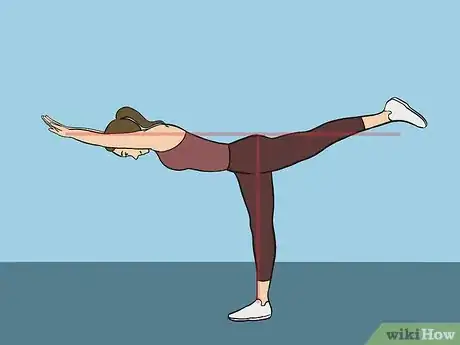

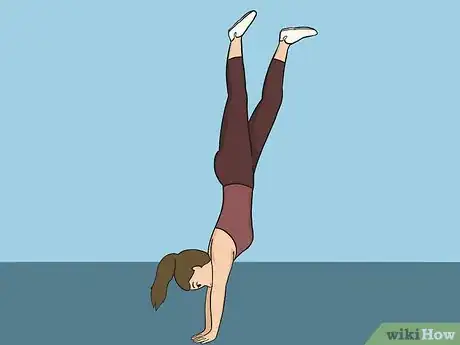


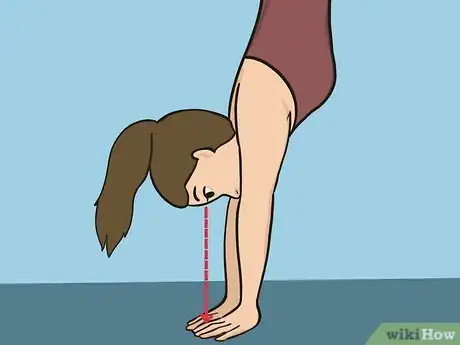

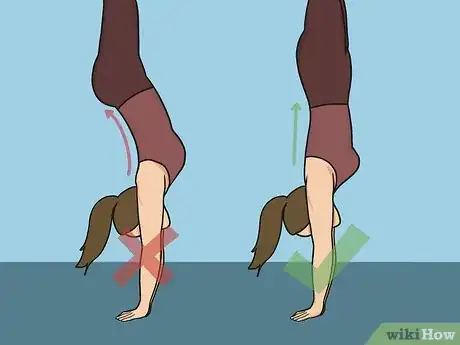
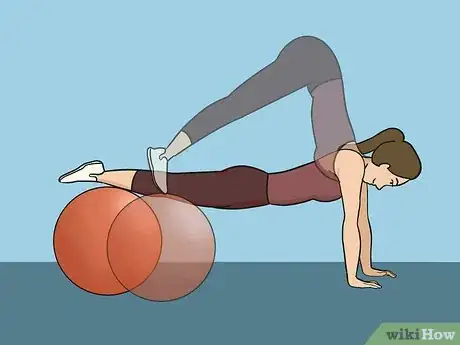

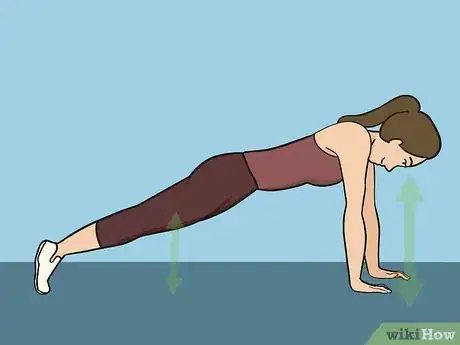
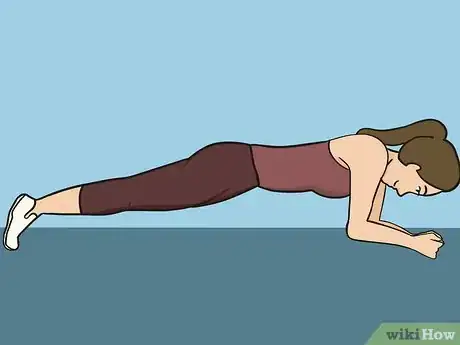

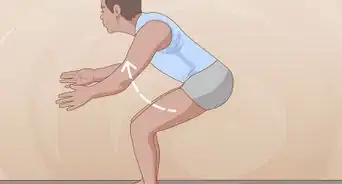




-Step-6-Version-4.webp)











